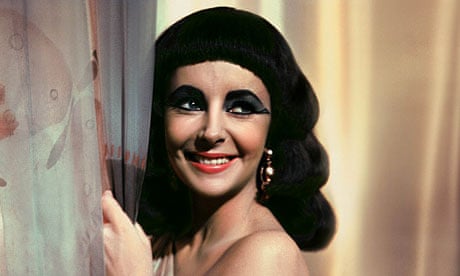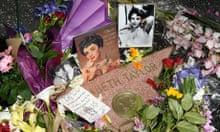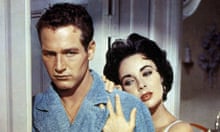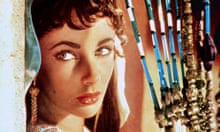The Cleopatra costume will, surely, dominate the news reports but with all respect to the Egyptian queen, Liz was bigger than that.
Elizabeth Taylor evokes more images than the number of husbands she had. She was the breathtakingly beautiful child who – unlike her near contemporary, Judy Garland – seemed to slip into adulthood unscarred by her precocious professional success; the sultry dramatic actress; the compulsive bride, who went through husbands like fashion trends; the scarlet woman who broke up America's sweethearts, Eddie Fisher and Debbie Reynolds; the female half of what can very legitimately be described as the greatest love affair of the 20th century; the most beautiful woman in the world; front-page stalwart of the National Enquirer; star of some of the best movies of her era; star of some of the worst celebrity perfume adverts; the gay rights campaigner; the defender of Michael Jackson. Next to Taylor, Marilyn Monroe looks monochrome and monotone.
Even towards the end of her life, Taylor, despite near incapacitation, still not only understood the increasingly ridiculous celebrity world, but proved that – to paraphrase a quote from her most photographed role – age could not wither her. She was one of the most mature users of Twitter and her Twitter feed was so Tayloresque as to be nigh-on parodic, mixing passionate defences of Jackson with shout-outs to reality TV android Kim Kardashian and the occasional – and necessary – denials that she had re-re-re-re-re-re-re-re-remarried ("Jason is my dearest friend!" she tweeted last year, at the age of 78, with an understandable giggle).
Those born in the 40s will probably remember her as the wife of Richard Burton and the actor who radiated sex without ever being as coarsely upfront with her assets as, say, Monroe or Jane Russell. Those born in the 70s will have the slightly less erotic image of Taylor as the wife of the unforgettably named Larry Fortensky, sporting makeup, jewellery and hair that makes Russell Brand today look a bit low-key. Yet she was equally famous to those born in either decade, and this is not just because of her ever fluid image but her fearlessness at breaking social mores.
Her close friendships with gay actors – most notably Rock Hudson and Montgomery Clift – showed her to be more open-minded than most in an age when homosexuality was career-threatening. Taylor did more than pretty much anyone in her era by helping to remove the stigma of both homosexuality and, tragically, Aids by her loyalty to Hudson when he was dying from the disease.
Just as scandalous in its way was Taylor's relationship with Burton. Both were married when they met and neither made any attempt to hide not just their love for one another but their lust. Now divorce is as common among actors as undeserved Oscars but Taylor and Burton still look red-blooded next to today's anaemic Hello! wedding spreads. The publication last year of Furious Love: Elizabeth Taylor, Richard Burton and the Marriage of the Century, by Sam Kashner and Nancy Schoenberger, truly puts to shame today's pretenders, not least with its inclusion of Burton's love letters to Taylor. But there was one letter even Taylor, the consummate celebrity, couldn't share with the public: the last one Burton wrote to her just before his death in 1984, saying he wanted to come home, and Taylor was home. That letter remained where it has ever since she received it: in her dressing table drawer, next to her bed.
Carrie Fisher compares her mother, Debbie Reynolds, and her father, Eddie Fisher, to Brad Pitt and Jennifer Aniston, with Taylor – who made Fisher her husband number four – playing the Angelina Jolie role. It is a smart riff, neatly evoking the media hysteria that accompanied Fisher and Taylor's affair while he was still with Reynolds and the ensuing marriage (and, inevitably, divorce – there was no way little Fisher could ever compete with the mountain of machismo that was Richard Burton).
But the real joke is the comparison between Jolie and Taylor. Jolie's fame rests entirely on her personal life, which can be summed up as "married Rachel from Friends' husband, fond of adopting". As Jolie has amply proved, one doesn't need to be a good actor, or even appear in any good films, to be an A-list celebrity these days: one just needs to be thin and have a fondness for being photographed. Taylor had the life, the looks, the movies, the smarts and the talent, and she – unlike Jolie – looked as if she not only enjoyed the occasional plate of pasta but my God, to watch her eat it would have been an experience in itself. As they say in Hollywood, it's the films that got small.







